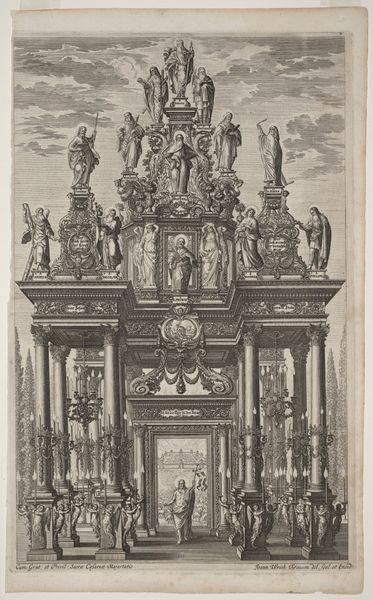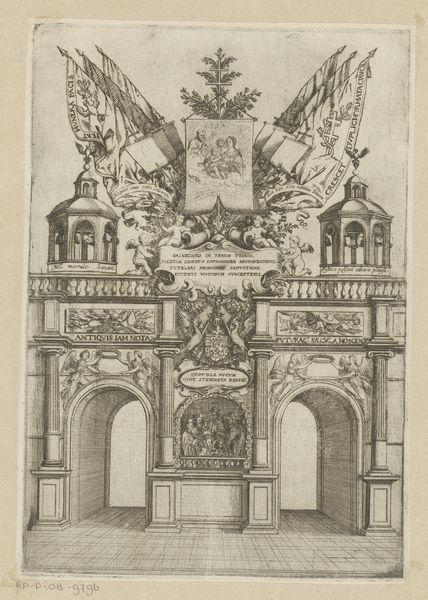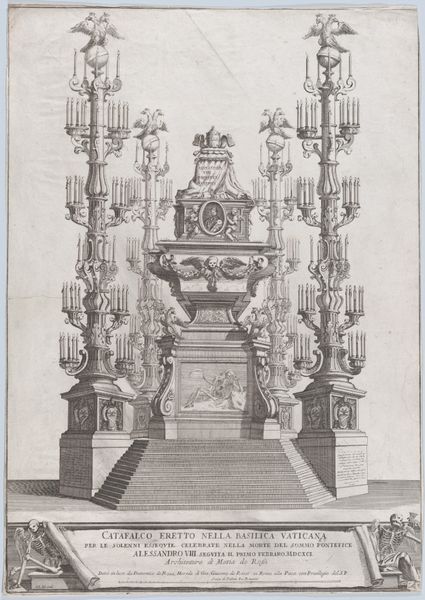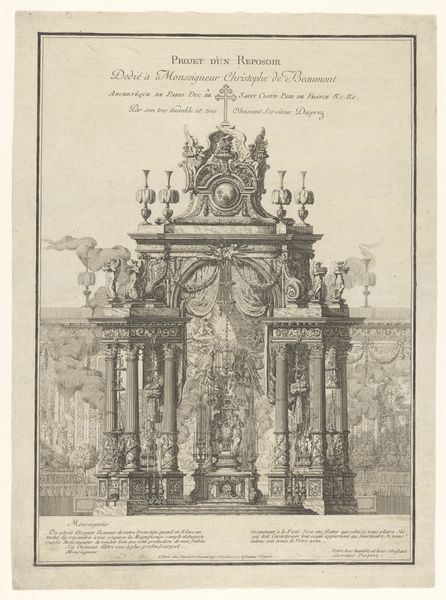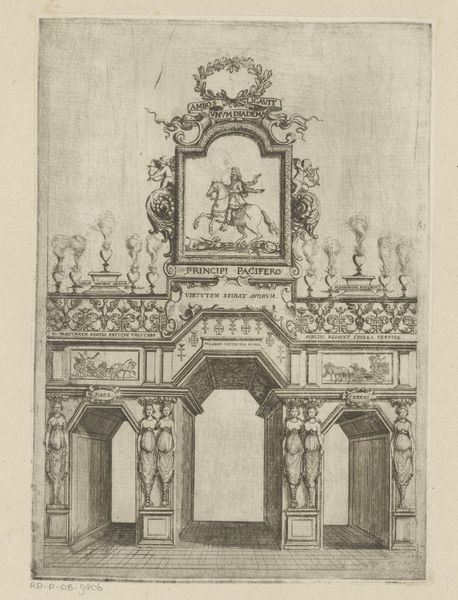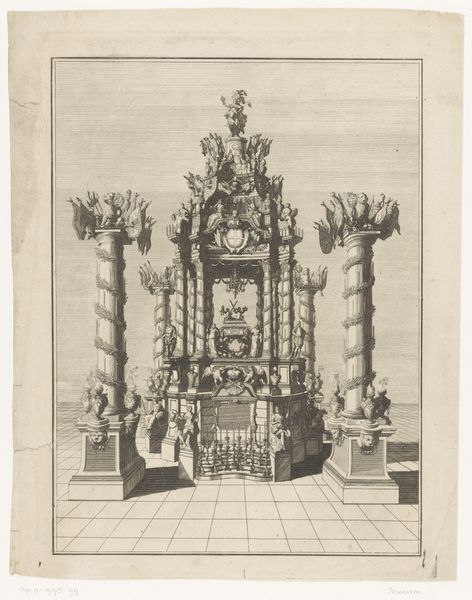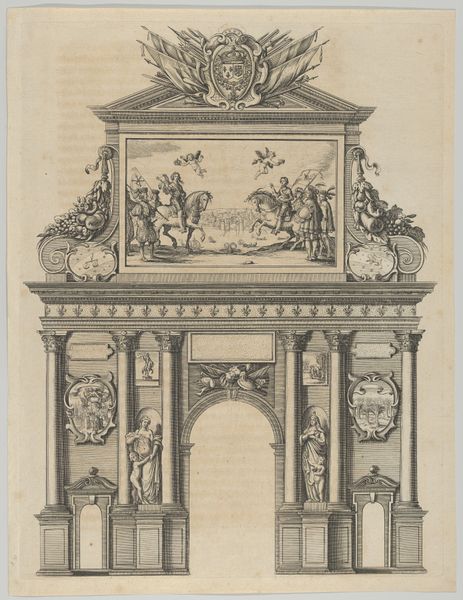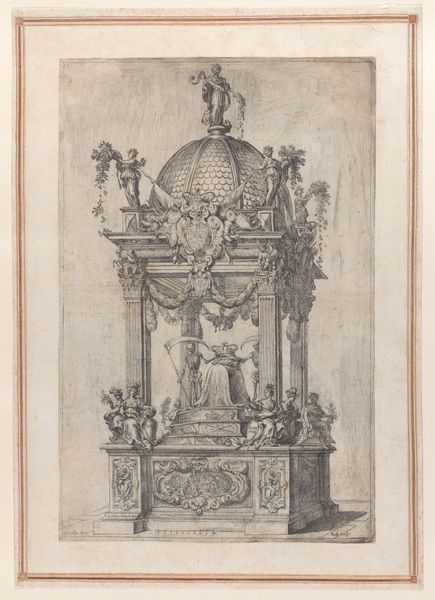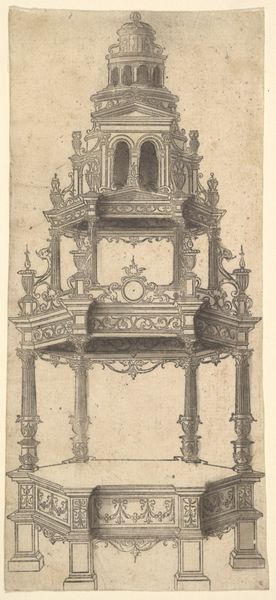
print, engraving, architecture
#
baroque
# print
#
old engraving style
#
cityscape
#
history-painting
#
engraving
#
architecture
Dimensions: height 672 mm, width 474 mm
Copyright: Rijks Museum: Open Domain
Editor: This is a print from between 1612 and 1619 by Peter Isselburg, called "Triumphal Arch in Honor of Emperor Matthias of Austria." It has this incredible level of detail! The symmetry, the almost excessive ornamentation… It's grand, imposing, even intimidating. What kind of statement do you think this piece is making? Curator: It's a powerful statement indeed, a monument of propaganda crafted in the midst of political upheaval. Notice the prominent placement of imperial symbols. How do they function here? Consider the context: Matthias's reign was marked by religious tensions and power struggles. This arch is not just about Matthias, but about projecting an image of unassailable authority and legitimacy during times of crisis. It speaks to the performative aspect of power. Editor: So it's less about commemorating an actual triumph and more about crafting a specific narrative, right? The architectural structure almost becomes a stage set. Curator: Exactly! The cityscape functions as a backdrop for political theater. Consider the Baroque style. It's all about spectacle, about overwhelming the viewer with grandeur. Think about who this imagery was intended for and what power dynamics were at play. Who benefits from this constructed image of imperial strength? Editor: It seems like this arch, even in print form, aimed to solidify the Emperor's position, silencing any opposition through visual dominance. I hadn’t considered how performative and potentially silencing grand displays of power could be. Curator: And remember, artistic and political choices rarely exist in a vacuum. This piece opens a window onto understanding a very specific time, revealing the strategies used to perpetuate power imbalances. Editor: I'm now seeing how deeply rooted this seemingly celebratory piece is in the politics of its time, a visual argument for imperial might. Thank you!
Comments
No comments
Be the first to comment and join the conversation on the ultimate creative platform.
